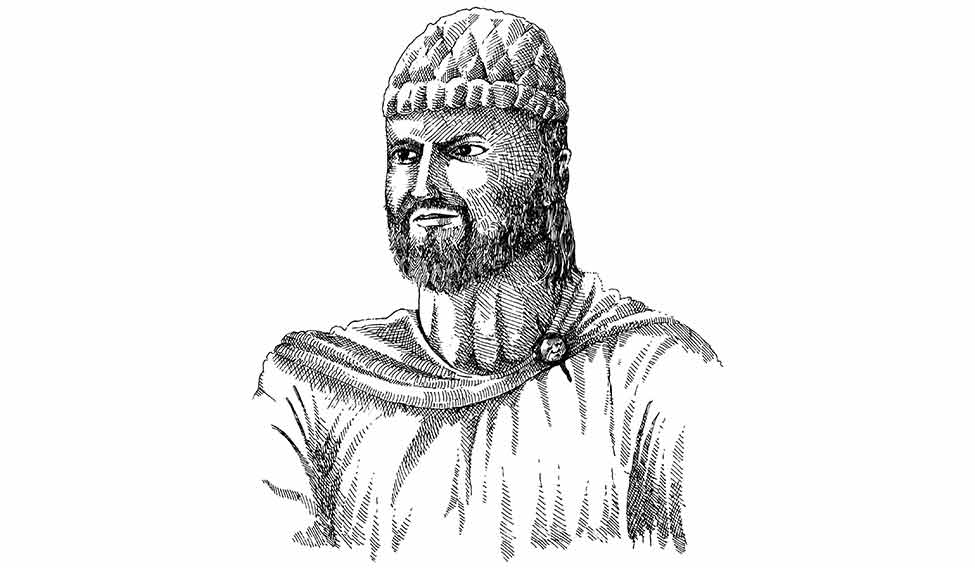
The Rabatak inscription, which was discovered accidentally in 1993 atop a hill in Afghanistan, describes Kanishka as “the Kushan, the righteous, the just, the autocrat, the god”. This deep appreciation for the great ruler is closely reflected in his few surviving portraits. From the large, curious, headless standing sculpture in sandstone at the Mathura museum to the numerous gold and copper coins that he issued, with him on one side and the gods on the other, show him flaunting a thick and flowing beard, wearing a long tunic, pants and enormous boots. He holds a large standard and a sword hangs by his waist. This may seem like a self-acclaiming image of power, dignity and grandeur, but there is more to the man. The life story of Kanishka can be gathered through the rare objects and inscriptions that survive in museums and sites across the world.
After Alexander's invasion of the northwestern parts of India and beyond, that part of central Asia became a hub of many criss-crossing races, as they struggled to overcome the Greeks. During those troubled times, the nomadic and fierce Kushanas rose to power in the arid, difficult, desert landscapes of central Asia. They were to trade through the ancient Silk Route and across the Indian Ocean and remain in power for the next 300 years.
By the first 25 years of the common era, the Kushana chiefs had occupied Afghanistan and the Hindu Kush, extending from modern-day Iran to the Indus and emerged rapidly as a powerful dynasty. After nearly two generations, Kanishka assumed power in 128 CE and became one of the greatest men to have influenced Indian history, impacting religion, art, politics and science. He extended his reign deep into the Indian subcontinent stretching from Kashmir to Mathura and brought with him the Greco-Roman or Gandhara style of sculpture. A number of them showing the Buddha and his life story in dark grey schist stone can be spotted in major museums of India.
Co-ruling with his kin Vashishka from Purushpura (modern-day Peshawar) and Mathura with a mature political approach to administer the large region under him, Kanishka established regional governments and military establishments to protect his empire. He demonstrated great religious syncretism and tolerance for different beliefs, evident from his coins that depict Iranian, Hindu and Greek divinities.
Kanishka’s major contribution was to Buddhism. He is known to have organised the fourth major Buddhist Council in Kashmir where Buddhist scriptures in Prakrit were translated into Sanskrit. An ancient stupa (locally called the Kanika Chorten) survives in the high Himalayas of the Zanskar valley in Kashmir which is revered deeply by Buddhists even today. Remains of a much more magnificent stupa (with a height of over 600ft) built by him was discovered in early 20th century in Peshawar as Kanishka devotedly spread mahayana Buddhism in central Asia, ultimately becoming a practitioner himself. Mahayana Buddhism is considered to be an important movement within Buddhism as it believes that not just the Buddha, but every being has the right and means to attain salvation and enlightenment. The spread of mahayana Buddhism by Kanishka was an equalising force that enabled global expansion and the spread of Buddhist beliefs. Kanishka was benevolent and kind to his people for which they regarded him greatly and he was often compared with Ashoka, who ruled nearly 400 years earlier.
Interestingly, Kanishka’s rise to power also marks the beginning of the Saka era calendar, which was adopted as the Indian national calendar in 1957.
Joyoti Roy is outreach consultant, National Museum, New Delhi.






